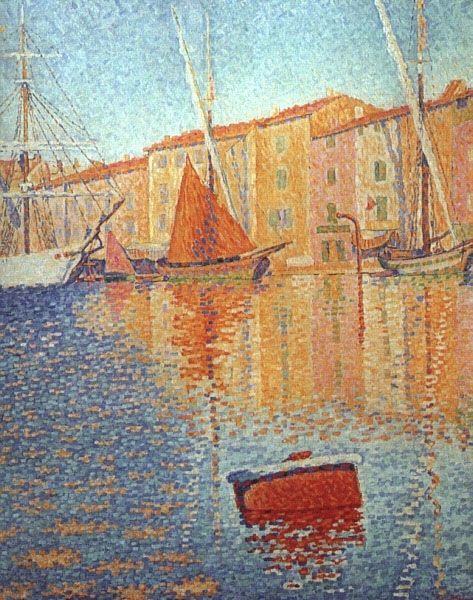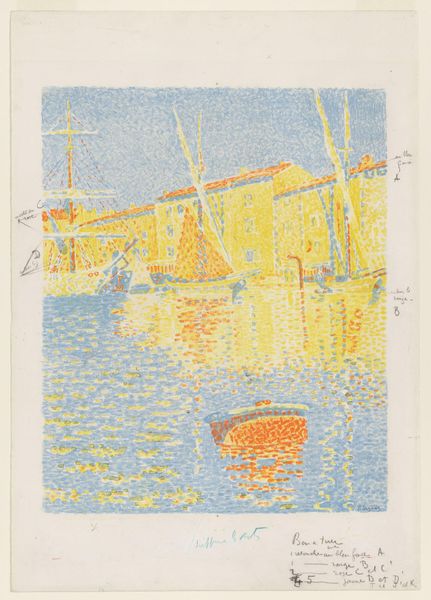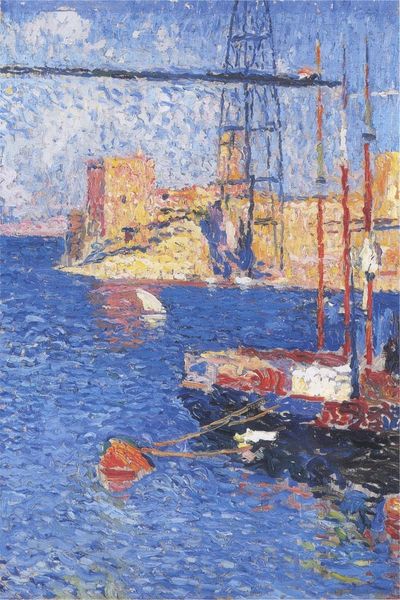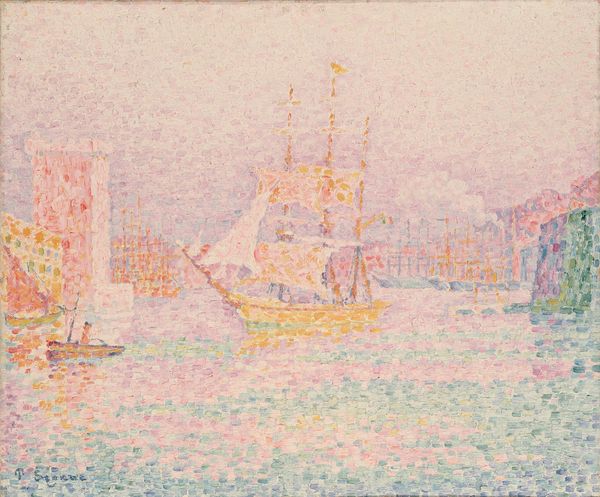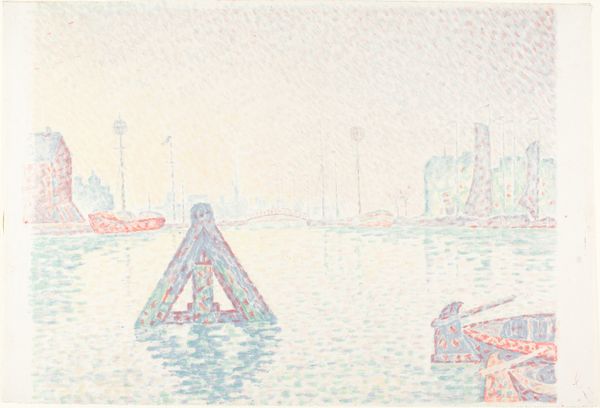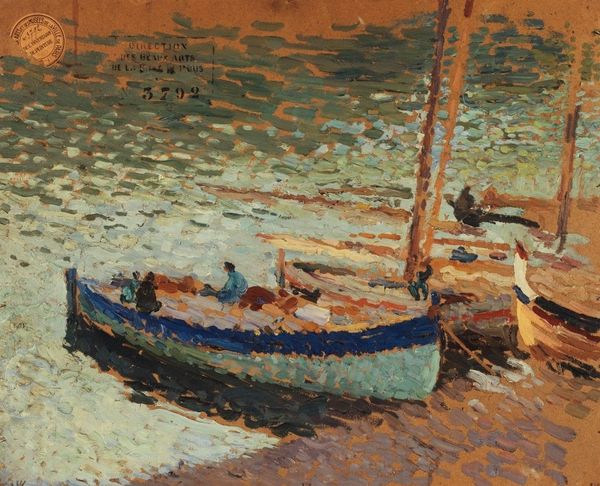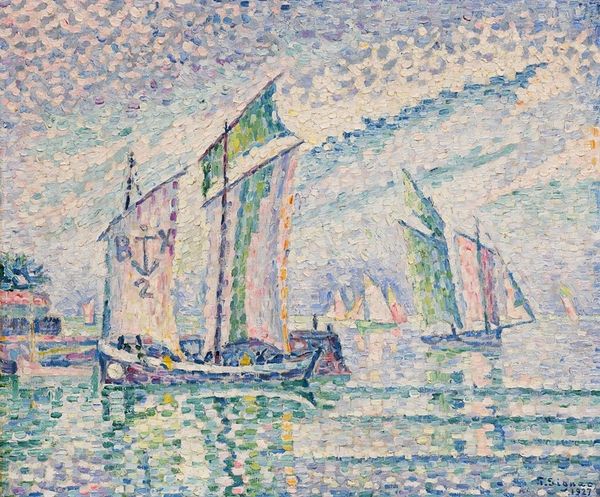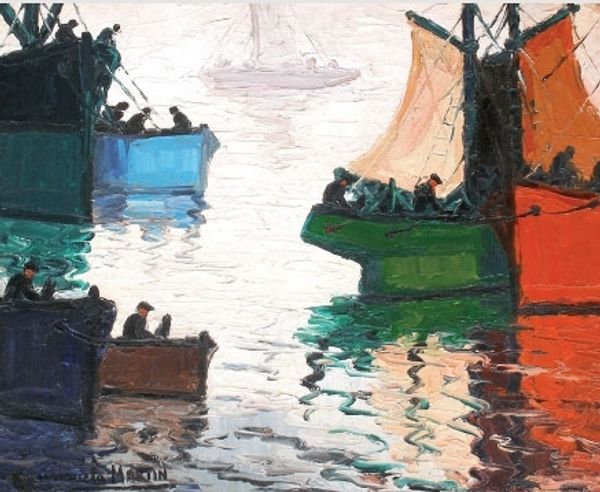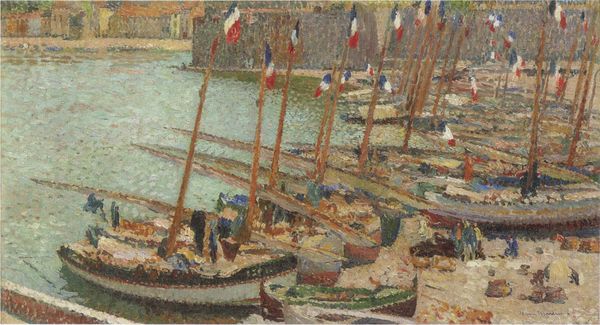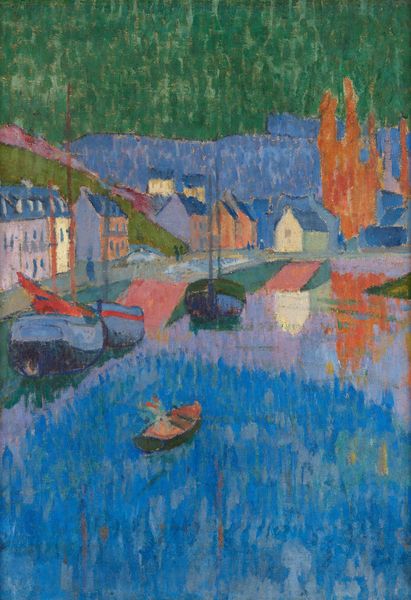
Copyright: Public Domain: Artvee
Curator: Before us, we see Paul Signac's "The Buoy," completed in 1894. The medium is watercolor. Editor: There's a tangible warmth to this image, an immediate sensory appeal from the way light dances on the water. I’m drawn to the process, the layering evident in each small stroke, like viewing it while understanding the maker's repetitive actions. Curator: Indeed. Note the emphasis on color theory at play here. Signac, deeply involved with Neo-Impressionism, builds form not through traditional shading, but by juxtaposing discrete points of color, adhering to the optical mixing theories espoused by Chevreul. Consider the overall composition—the arrangement of forms is geometrically structured. Editor: But what of the labor involved? Watercolors demand control, a careful understanding of pigment behavior. This wasn't just about dabbing dots; it was a conscious manipulation of material, the repeated, painstaking gesture in crafting an impression. Curator: The artist’s meticulous, methodical application serves as an objective study of light and form in a coastal cityscape. Observe the way Signac breaks down the reflected light on the water into complementary colors; each brushstroke carefully calculated for maximum luminosity. The title directs our reading; we’re led toward understanding how form itself becomes the subject. Editor: The repeated touch reveals not just technique, but perhaps a monotony of labor itself. Does this process serve as metaphor for a specific human experience or social relationship within that bustling harbor city? Pointillism, for all its theory, required hands. What was the experience of Signac creating this? The water reflects something real. Curator: The materiality becomes almost irrelevant when considering the intellectual rigor behind its creation. The repetitive strokes aren't mindless, but deliberate constructions serving a pre-determined, scientifically grounded optical experience. Editor: Agreed, but considering both the intellectual approach, and how material constraints shape the final product offers a fuller, more dimensional understanding. Curator: In the end, it's a fascinating example of how the principles of Neo-Impressionism transform a familiar subject, producing both a visual feast and a cerebral exercise. Editor: Indeed, considering process allows us to contemplate both labor and vision behind this scene.
Comments
No comments
Be the first to comment and join the conversation on the ultimate creative platform.
